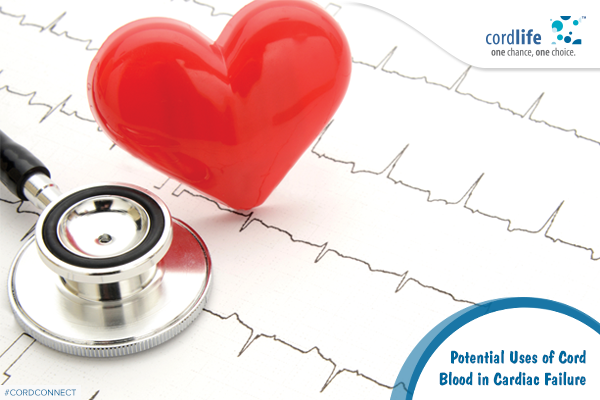Table of Contents
Cardiac failure continues to be a significant global health concern. According to the American Heart Association statistics, over one in three American adults have one or more types of cardiovascular disease resulting in an average of 1 death every 39 seconds. In addition to that, a large number of people worldwide are today surviving with the consequences of palliated congenital heart disease such as artificial valves and conduits and declining ventricular function.
Advancements in medical care and surgical procedures have in recent times significantly improved the lives of many who are suffering from coronary problems. However, these treatments rarely bear uniform results and are out of the reach of many patients in terms of affordability.
A research team headed by Professor Raimondo Ascione, Chair of Cardiac Surgery & Translational Research in the School of Clinical Sciences at the University of Bristol (UK) has established that human umbilical cord blood stem cells may be used in repairing heart muscle cells impaired owing to a coronary failure. Published in the Stem Cell Reviews & Reports and funded by the British Heart Foundation (BHF) and the National Institute for Health Research (NIHR), the investigative study discovered a set of rare stem cells called CD133+ extracted from the human umbilical cord blood that possessed the capability to regenerate into cardiac muscle cells by expanding to almost seven-fold, under clinical, in-vitro conditions.
Professor Ascione said, “We believe our study represents a significant advancement and overcomes the technical hurdle of deriving cardiac muscle-type cells from human cord blood. The method we have found has the attributes of simplicity and consistency. This will permit more robust manipulation of these cells towards better cell homing and cardiac repair in patients with myocardial infarction. Our research suggests that in the future stem cells derived from cord blood bank facilities might be used for repair after a heart attack.
Professor Jeremy Pearson, Associate Medical Director at the British Heart Foundation, said, “Regenerative medicine research in the lab, alongside studies of patients, is absolutely crucial. Right now, the damage to the heart caused by a heart attack cannot be reversed. Through research like this across the UK, we hope to bring our vision of mending broken hearts to reality. There has been interest for some time in the potential use of blood from the umbilical cord as a source of stem cells for therapy in a variety of diseases. This study has shown for the first time that it’s possible to turn cord blood stem cells into cells that look like heart muscle, in the lab. The results are encouraging, but there are still lots of questions to answer before we’ll know whether these cells can be used successfully for heart repair in patients.”
The findings from this study have the potential to lay the foundation for forthcoming therapy in the wake of a stroke given that cells acquired from adults following a heart attack may be less operational due to ageing and risk factors.
